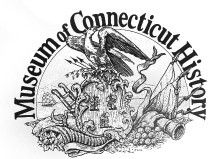Slavery existed in America from the earliest period of colonial settlement at the beginning of the seventeenth century until it was abolished in 1865 by passage of the Thirteenth Amendment. While some slaves became free through legal means, many who wanted freedom chose to escape from their owners and find a safe location. This system began during America’s colonial period and led to laws that penalized persons who assisted runaway slaves. In 1793 the United States government passed its Fugitive Slave Act that allowed for the capture and return to slavery of any runaway slave living in a free state. As it developed over the years, the Underground Railroad, which was neither under the ground nor a railroad, provided a series of safe havens, or stations, for fugitive slaves who were making their way to the Northern states, Canada, or other locations.
The North Star was a guide for runaway slaves leaving the South, but once in the Underground Railroad system the participants were conducted by foot, wagon, horse, or boat to a private house, barn, or church where they would be hidden until it was possible to send them to the next northward-bound location. This operation required the cooperation of free African Americans, Native Americans, and whites. It also required secrecy since free participants could be charged with breaking the law in helping slaves escape their owners. This secrecy has made it difficult to document fully what buildings in Connecticut were used in the Underground Railroad, and often this information has survived only in oral tradition.
Fugitive slaves entered Connecticut at a number of points. Some passed through the state by way of Stamford, New Haven, or Old Lyme, often traveling on to Farmington, the “Grand Central Station” in Connecticut. From there they headed north to Westfield or Springfield, Massachusetts. Some traveled to Springfield by way of Middletown, Hartford, and other communities along the Connecticut River. Those who passed through the state by way of New London or Westerly, Rhode Island, went north to Norwich and Putnam, and then to Worcester, Massachusetts. A western Connecticut route included Waterbury, New Milford, Washington, Torrington, Winchester, and Winsted.
The buildings included on the Freedom Trail as Underground Railroad sites are:
BLOOMFIELD
Francis Gillette House
545 Bloomfield Avenue
FARMINGTON
Elijah Lewis House
1 Mountain Spring Road
Austin F. Williams House/Carriage House
127 Main Street
Samuel Deming House
66 Main Street
Smith-Cowles House
27 Main Street
Timothy Wadsworth House
340 Main Street
GUILFORD
Sachem Country House
111 Goose Lane
MANCHESTER
Hart Porter Homestead/Outbuilding
465 Porter Street
MIDDLETOWN
Benjamin Douglas House
11 South Main Street
NEWINGTON
Brace/Stephen House
1349 Main Street
NEW LONDON
Joshua Hempstead House
11 Hempstead Street
NORTH STONINGTON
Randall’s Ordinary Landmark Inn & Restaurant
Route 2
NORWICH
Verney Lee House
118 Washington Street
OLD LYME
Steven Peck House
Lyme Street and Beckwith Lane
OXFORD
Washburn Tavern
90 Oxford Road
TORRINGTON
Uriel Tuttle House
3925 Torringford Street
Isiah Tuttle House
4040 Torringford Street
WILTON
The Ovals
36 Seeley Road
Some of these sites cannot be documented with precision; their inclusion is based on written histories, studies, and traditions.
Source: “Connecticut Freedom Trail” brochure, produced by the Connecticut Historical Commission.
